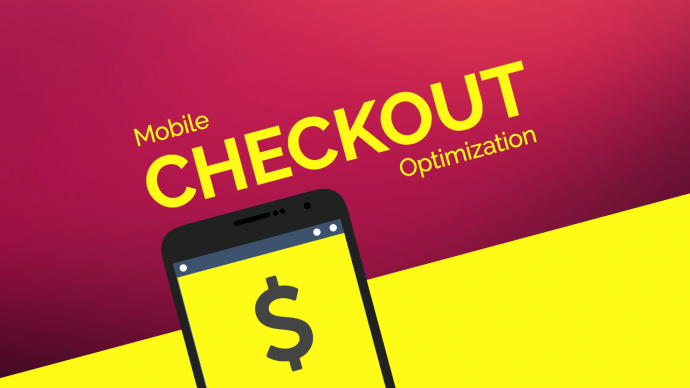Merchants have been told for years that the future is mobile payments, but not every merchant has applied that philosophy to enhancing their overall checkout strategy in order to deliver a seamless mobile shopping experience.
Momentum has increased dramatically, as industry data indicates that 48% of consumers start their shopping journey on mobile. The majority are still completing the checkout process on a computer, but with innovation in mobile payment technology, the number of customers that complete their shopping experience on a mobile device will continue to increase. Data from ComScore suggests that consumers spend 69% of their media time on mobile devices, which indicates the future of where retailers need to be.
Based on these insights alone, and the rapid shift toward mobile applications in the retail ecosystem, it’s clear merchants must ensure their checkout solutions are mobile-first in order to be truly customer-centric. We’ve identified five quick tips on how merchants can optimize their checkout in order to increase mobile checkout conversions.
Tip No. 1: Add Checkout Buttons
There is a good reason Amazon, as an e-commerce giant, managed to snag the title as world’s largest retailer. Beyond its vast inventory of products, its technology gave shoppers ability to quickly and seamlessly checkout without re-entering personal details each time. Following the rollout of its 1-Click checkout button in late 2017, other e-commerce companies have begun to integrate the same technology on their sites. Having the ability to checkout on a mobile device without having to enter payment credentials will dramatically improve conversion rates.
The 1-Click checkout option became popular for the same reason checkout buttons for payment gateways like PayPal, or digital payment options like Visa Checkout or MasterPass have seen an increase in popularity across e-commerce merchants. Visa has touted that its digital checkout option increased conversion rates for merchants by 51%.
The common denominator between each of these solutions is that checkout button allows customers to purchase faster without having to enter credit card credentials with each purchase. This streamlines the process and ensures shoppers they are checking out quickly and securely — through a method they previously indicated they’d prefer to pay with.
Tip No 2: Reduce Checkout Time
One of the greatest ways to turn away a customer during the shopping journey is to add too much friction into the buying process. This includes having too many form fields, and too many clicks that add an unnecessary amount of time to the checkout experience. Data from Baynard Institute showed that, in one study, a top reason (28% of respondents) for abandoning a purchase was because the process took too long, or was too complicated. Merchants can overcome this by integrating more sophisticated checkout options, like those mentioned above.
Particularly on mobile sites, merchants should also consider the number of forms and clicks it takes to get from a product page to checkout, and from checkout to order confirmation — and eliminate any unnecessary steps along the way. Consumers don’t want to spend time typing in too many details and clicking through page after page on a mobile device. This friction leads to increased churn. Integrating mobile payments options, and more streamlined payment processing technology solutions can help merchants enhance their checkout speed.
Tip No 3: Let Customers Checkout as Guests
Similar to reducing the time it takes to checkout, merchants must give shoppers the choice to complete their purchase without creating an account. All merchants want to capture as much data as possible when consumers make a purchase on their site, but requiring consumers to create an account to complete a sale is the easiest way to lose those customers. In the same Baynard Institute survey cited above, 37% of respondents said that they abandoned a purchase when prompted to create an account.
Instead of forcing a customer to give you data, encourage shoppers to provide data in exchange for a special promotion for being a customer. On mobile, the process isn’t as easy as on a computer, so you need to incentivize the process. For those who don’t want to provide more information, they can simply continue on with their purchase without worrying about if they need to fill out more friction-filled forms on a website before being able to checkout. For shoppers who do have accounts, allow them to be able to save that data within a secure mobile browser, or on a mobile app in order for them to quickly checkout, while still providing the important customer account details.
Tip No 4: Promote Security Features
Consumers are getting savvier when it comes to understanding the importance of protecting their financial credentials online. This is especially true when shoppers interact with a merchant’s online site or app. Merchants should advertise the fact that a payment made on that site is fully secure, and that a customer’s data is fully encrypted. Displaying an SSL certificate symbol during the checkout process, for example, can give customers peace of mind their data is safe.
Similarly, customers checking out of a mobile site should understand what a merchant means when the market their security credentials. Reminding customers that no payment data is stored on a merchant’s site can play a critical role in ushering them through a more confident checkout process. Trust goes a long way in a customer relationship, and because mobile is still a relatively new technology in the scope of e-commerce’s existence, it will take a little extra reminding on the merchant’s end.
Tip No 5: Focus on Dynamic Page Design
The latest trend in mobile e-commerce solutions is all about customizing UX design, and customizing sites you better match a customer’s browsing and buying needs. To this extent, merchants should first ensure their mobile checkout solutions mirror that of their computer experience. Merchants must convey the same rich design and functionality, regardless of which channel a customer is interacting across. When shoppers are browsing on a merchant’s mobile site, speed is an important factor; merchants shouldn’t implement complex design factors at the risk of slowing their site down.
Usability, above all else, and the ability for shoppers to find the items they are looking for in order to checkout quickly matter most when it comes to getting customers to actually checkout on mobile. The option to navigate from one page to another without getting interrupted by glitchy mobile software issuers can make or break how long a customer will stay on your site. Merchants can ensure their checkout design is fully optimized by working with a payment processing solution that can easily integrate into their existing e-commerce platform. All of this can be achieved by working with an integrated payments processing solution provider, like goEmerchant, that can help merchants better onboard diverse payment options and secure multi-channel checkout platforms. A partner that values speed, security and flexibility in their merchant payment processing solutions will help any merchant help realize why mobile checkout optimization should matter to them.




